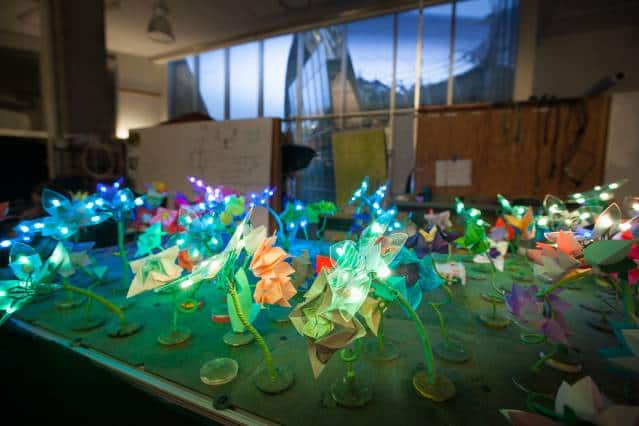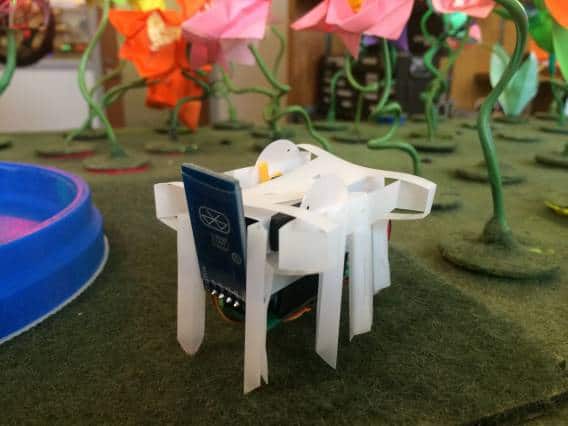In an attempt to make programming more attractive, MIT has developed a stunning “robot garden”, dozens of fast-changing LED lights and more than 100 origami robots that can crawl, swim, and blossom like flowers. I’ll tell you, if this doesn’t make kids want to code… nothing will!
The “garden” was created by a team from MIT’s Computer Science and Artificial Intelligence Lab (CSAIL) and the Department of Mechanical Engineering. It features robotic sheep, origami flowers that can open and change colors and, of course, robotic ducks – you can’t have a robot garden without robotic ducks. The ducks actually change their shape by being heated in an oven.
The software for the robots is operated from a tablet and is described in a paper accepted to the 2015 International Conference on Robotics and Automation. The project is not only meant to highlight the attractive results you can get through robot programming, but also exemplify their work in distributed computing – a software system in which components located on networked computers communicate and coordinate their actions by passing messages.
“The garden tests distributed algorithms for over 100 distinct robots, which gives us a very large-scale platform for experimentation,” says CSAIL Director Daniela Rus, the Andrew and Erna Viterbi Professor of Electrical Engineering and Computer Science and a co-author of the paper. “At the same time, we hope that it also helps introduce students to topics like graph theory and networking in a way that’s both beautiful and engaging.”
The software can actually run on any Bluetooth device through a simple “control by click” feature that involves clicking on individual flowers, as well as a more advanced “control by code” feature where users can add their own commands.
“Students can see their commands running in a physical environment, which tangibly links their coding efforts to the real world,” says Lindsay Sanneman, who is lead author on the new paper. “It’s meant to be a launchpad for schools to demonstrate basic concepts about algorithms and programming.”
According to the team, the entire design came together quite easily – they started with eight distinct varieties of origami flowers, including lilies, tulips, and birds of paradise. The flowers are embedded with printable motors which allow them to “blossom”. The sheep robots were created via traditional print-and-fold origami techniques, while the magnet-powered ducks started as two-dimensional paper prints that were heated in an oven, causing them to automatically fold into shape.
“Many elements of the garden can be made very quickly, including the pouch motors and the LED flowers,” DelPreto says. “We’re hoping that rapid fabrication techniques will continue to improve to the point that something like this could be easily built in a standard classroom.”
Personally, I agree with the team: tools like this one will raise a lot of attention to programmed systems; it’s an efficient an beautiful way of exhibiting the research.
“Computer science has so many real-world applications that a lot of kids don’t see because they aren’t exposed to them from an earlier age,” Sanneman says. “That’s why we think there’s a lot of potential for tools like this.”
Images and story source: MIT.




